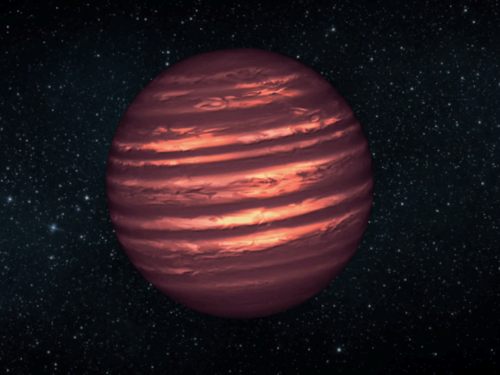
This brown dwarf was found emitting methane and has a temperature inversion in its atmosphere, which scientists believe may be caused by the phenomenon of aurorae.
Researchers using the James Webb Space Telescope have made an surprising discovery – methane emitting from a brown dwarf in space.
The team said this is the first time a brown dwarf has been spotted emitting methane like this and have raised a few theories on how it may be possible. The study suggests this brown dwarf might generate aurorae, similar to those seen on our own planet in the form of the Northern Lights.
Brown dwarfs are on a unique point on the size scale in space, being larger than planets or gas giant but smaller than stars. Thousands of these objects have been identified so far, but the latest discovery is a major surprise according to the team – which included Johanna Vos, assistant professor in Trinity College Dublin.
Vos was part of a team that used the James Webb Space Telescope to investigate 12 brown dwarfs – including one roughly 47 light years away called W1935. This brown dwarf was co-discovered citizen scientist volunteer Dan Caselden and the Backyard Worlds programme.
A hidden cause?
Using Webb’s instruments, the team discovered methane emitting from the dwarf and claim this has never been seen before. Dr Jackie Faherty – the leader of the study – said methane gas is expected in giant planets and brown dwarfs but “we usually see it absorbing light, not glowing”.
Computer modelling also suggests the brown dwarf likely has a temperature inversion, which is a phenomenon where the atmosphere gets warmer with increasing altitude. This can happen to planets orbiting stars, but the researchers said W1935 is isolated and has no obvious external heat source.
To understand the mysteries of the brown dwarf, the team turned to our own solar system, as Jupiter and Saturn both show signs of methane emission and temperature inversions. The team believes the likely cause is aurorae – high-energy particles from a star that interact with a planet’s magnetic fields and atmospheres.
But as the brown dwarf has no host star, solar winds are not the answer to the aurorae. But the researchers said both Jupiter and Saturn have active moons that occasionally eject material into space and enhance their auroral footprints.
With this in mind, the researchers believe that the aurorae on this brown dwarf might be caused by an active, yet-to-be discovered moon.
Vos said the project has been great to work on “from start to finish” and said it is “an excellent time to be an astrophysicist”.
“While this was a completely unexpected discovery, we can now search for similar hints of aurorae in even more extrasolar atmospheres with JWST,” Vos said. “We have never had a telescope with comparable sensitivity or wavelength range as JWST, so it’s not surprising that a whole range of exciting new discoveries are popping up across all fields of astrophysics.”
Find out how emerging tech trends are transforming tomorrow with our new podcast, Future Human: The Series. Listen now on Spotify, on Apple or wherever you get your podcasts.

